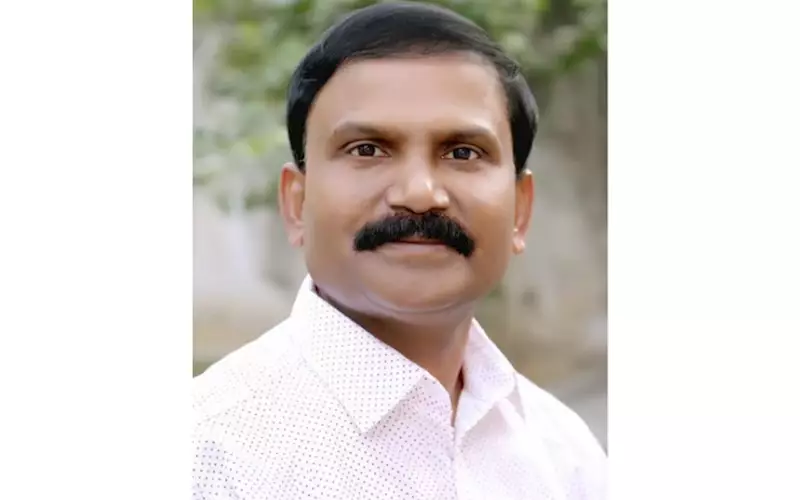Anjan Baral: The industry should extend a helping hand
The help is needed in terms of establishing modern laboratories and developing the course curriculum in line with the needs and requirements of the industry from time to time, says Dr Anjan Kumar Baral, professor and researcher, Guru Jambheshwar University of Science & Technology and Chairman, MSD 6, BIS, New Delhi in the Print Guru series
15 Jan 2024 | By PrintWeek Team
What is the USP of the print and packaging industry in India?
It is the successful adaptability to change with time by the Indian printing and packaging industry coupled with the young, energetic, technically sound and dynamic entrepreneurs and technocrats being involved in these industries for the proper functioning of their particular business establishments.
As an educator, what have been the three biggest problems you have faced?
Point number one is the scarcity of funds for not being able to procure the proper infrastructure towards imparting first-hand exposure to the admitted students. The second point relates to the lack of coordination with industry and institute linkage programmes. The third point is not able to update the course curriculum at a regular interval of time, to benefit the students and industry.
How do you think these obstacles could be tackled creatively?
The industry should extend a helping hand to the printing institutes in terms of establishing modern laboratories and developing the course curriculum in line with the needs and requirements of the industry from time to time.
Which is your favourite subject and why is it important?
For the last twenty-six years, I have been teaching offset printing technology at various levels, starting from graduate, post-graduate and PhD research levels, after working with the latest sheetfed offset presses for three years, immediately after graduating from Pune. I feel this particular printing technology has the right ingredients and the potential to be able to produce the highest level of print output with multiple attributes to address during the print cycle. I also published a book on the same subject in 2009.
Today, you are a teacher. Who was your guru, and why so?
It is difficult to name only one guru who inspired me, as there are a number of respected gurus who shaped me at different points in time. Prof Diptendu Chowdhury, Prof Goutam Dasgupta, Prof PB Likhite, Prof Dr Rajendra Kumar Anayath are my real heroes.
One innovation you implemented after listening to your student?
Using the simple delivery method to reach the last student of the class, connecting the subject with the practical applications with lots of examples and involvement of students, is what I have developed over the years after listening to my students carefully.
Were you the minister of printing and packaging, how would you tackle the industry's problems creatively?
I will go for establishing industry-institute centres in all the prominent printing institutes for solving the industry-centric problems of the respective regions and one research centre for the material and technological aspects of the printing and packaging business. A centre of excellence may be created for carrying training to the faculty members and multi-disciplinary research work to benefit the printing and packaging industry in terms of quality enhancement and productivity optimisation.
What ingredient do you seek among your young disciples?
To create an interest among the students since they enter into the department to learn printing and packaging and to develop a sense of belongingness to this field. They should feel proud to be a part of this industry and should be willing to learn new technologies with time towards upgrading their knowledge base.
An article/listing in a publication that impressed you?
Developments in Digital Print Standardization by Christos Trochoutsos and Anastasios Politis, tells about the sequential developments and application parts of digital printing standards, which are relatively new than the conventional printing technique standards.
Your present preoccupation in the field of research?
Recently, seven PhD research scholars have completed their research work in the areas of print quality attributes relating to digital printing techniques, especially inkjet technology and productivity optimisation in sheetfed offset presses. Giving a thought on substrate and colouring substance characteristics on enhancing print, for the forthcoming research topics.
One project you are excited about?
Possible integration of AI for the smart print factory.
Assuming you can align with a print or packaging association, what would be the three most important things you would expect from it?
One, regular interaction with my fellow printers and educating them on the basics of print standards and applications without much investment. Two, the involvement of print entrepreneurs/technocrats of the various printing associations with the printing institute in terms of conducting knowledge-sharing sessions with the students and developing course content from time to time. Three, establishing infrastructural facilities at the department with the support of industry associations to strengthen the first-hand exposure of the students to the latest technologies.
The industry needs skilled professionals on the shopfloor, and different printing education institutes have been churning out printing professionals for decades now. Still, there seems to be a disconnect between industry and academia. Why? What do print teachers want from the industry? Read more in this series where PrintWeek asks 13 print gurus.











 See All
See All